Retrofitting Pro AV into Heritage Architecture: Compliance, Acoustics, and Hidden Cost Variables
)
Integrating modern audiovisual systems into heritage architecture presents a complex interplay between technological advancement and historical preservation. The process of retrofitting AV requires careful consideration of structural integrity, regulatory frameworks, acoustic challenges, and unforeseen financial implications. This article delves into the critical aspects of compliance with conservation authorities, the unique acoustic limitations of older structures, hidden cost variables in retrofit projects, and the balance between maintaining aesthetic integrity and achieving modern AV functionality.
Navigating Regulatory Compliance in Heritage Buildings
Heritage buildings are often protected by stringent regulations that aim to preserve their historical and cultural significance. These regulations can pose significant challenges when attempting to integrate modern AV systems. Compliance with conservation authorities typically involves detailed documentation and justification for any alterations, ensuring that the proposed changes do not compromise the building's character. For instance, installing cabling or mounting equipment may require non-invasive methods that do not damage original materials. Engaging with heritage consultants early in the planning process can facilitate smoother approvals and help identify acceptable solutions that meet both technological and preservation requirements.
Acoustic Challenges in Heritage Architecture
Older buildings often feature materials and construction techniques that were not designed with modern acoustics in mind. High ceilings, hard surfaces, and irregular room shapes can lead to issues such as echo, reverberation, and uneven sound distribution. Addressing these challenges requires a thorough acoustic analysis to identify problem areas and develop tailored solutions. Options may include the use of discreet acoustic panels, strategic speaker placement, and advanced sound processing technologies. It's essential to implement these solutions in a manner that respects the building's aesthetic, often necessitating custom-designed treatments that blend seamlessly with the existing architecture.
Unforeseen Costs in AV Retrofit Projects
Retrofitting AV systems into heritage buildings can incur hidden costs beyond the initial equipment and installation expenses. Structural reinforcements may be necessary to support new equipment, especially in buildings not originally designed to bear additional loads. Non-standard installation methods, such as custom mounts or concealed cabling routes, can increase labour and material costs. Additionally, unforeseen issues like the discovery of hazardous materials or previously undocumented structural weaknesses can lead to project delays and additional remediation expenses. A comprehensive site assessment and contingency planning are crucial to anticipate and mitigate these potential financial risks.
Balancing Aesthetic Integrity with Modern Functionality
Achieving modern AV functionality while preserving the visual and historical integrity of heritage buildings requires innovative and sensitive design approaches. Technologies such as wireless systems, miniature speakers, and projection equipment can be employed to minimize visual impact. In some cases, reversible installations that do not permanently alter the building fabric are preferred, allowing for future removal without damage. Collaboration between AV integrators, architects, and conservation specialists is essential to develop solutions that meet performance requirements without compromising the building's heritage value. This collaborative approach ensures that the integration of new technologies enhances the building's functionality while respecting its historical significance.
Integrating Modern AV Systems into Heritage Structures
The process of retrofitting AV systems into heritage architecture involves a delicate balance between embracing modern technology and preserving historical authenticity. By understanding and addressing the regulatory, acoustic, financial, and aesthetic challenges, stakeholders can develop solutions that honour the past while meeting contemporary needs. Integrate Middle East serves as a platform for professionals to explore and discuss these complex issues, fostering collaboration and innovation in the field of AV integration within heritage contexts.
Register for your complimentary passes to attend Integrate Middle East now.


